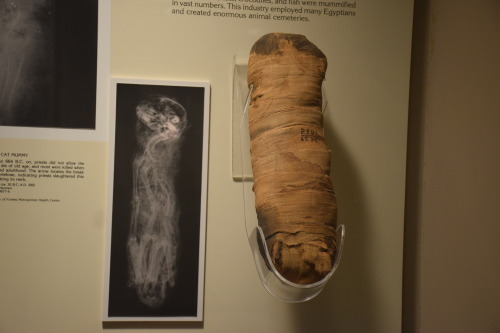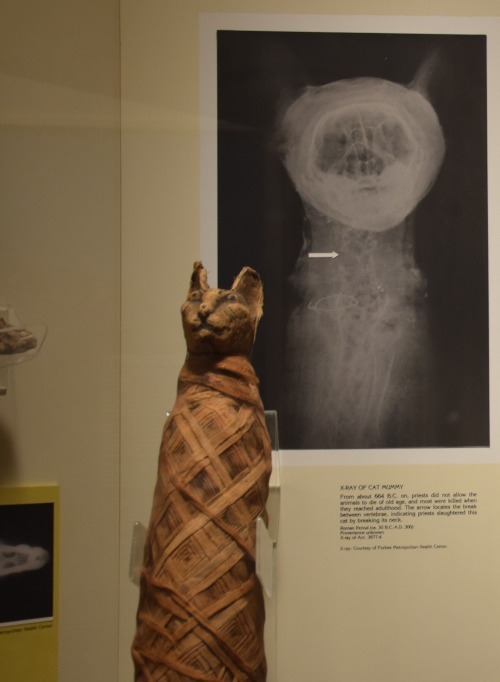
In ancient Egypt, cats were sacred animals. People dedicated mummified cats at the sanctuary of the cat goddess Bastet as offerings. The sanctuary was located in the city of Bubastis where the remains of numerous cat mummies and small cat sculptures have been found.
Cats were also pets, just like they are today, and were sometimes mummified and placed in tombs with their owners. The belief was that by placing cats and their owners in the same tomb the pair could remain together in the Afterlife.

Pictured above are mummified cats and x-rays of them on display in Carnegie Museum of Natural History’s Walton Hall of Ancient Egypt.
